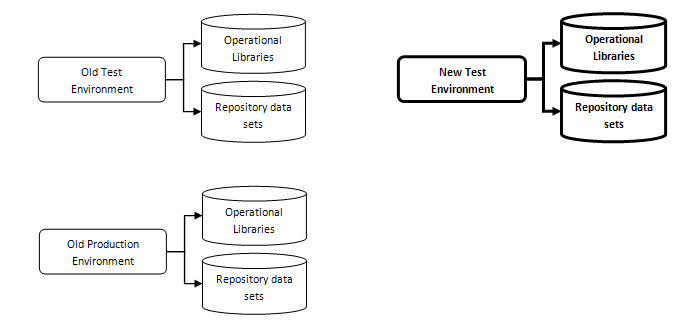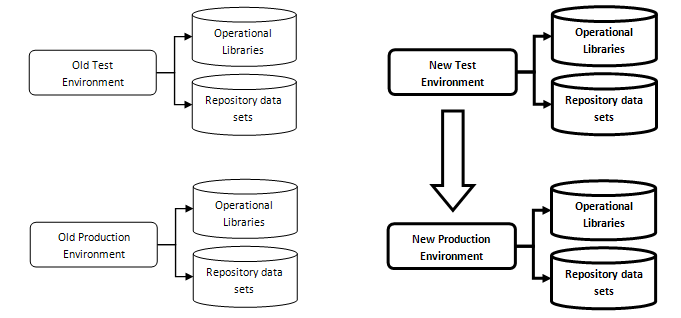The original installation consists of both a test environment and a production environment.
Note: When installing the New Environment, the LPAR-wide installation parameters, such as the QNAMEs, SSNAMEs, port numbers, prefixes and first three characters of started tasks and procedures names of the New Environments must be different from those of the old environments.
The Express Upgrade procedure consists of the following five main phases:
Figure 3 Phase 1: Install and test the New Test Environment

Figure 4 Phase 2: Compare Old and New Environments

Figure 5 Phase 3: Create New Production Environment

Figure 6 Phases 4 and 5: Upgrade from Old to New Production and Test Environments using the Express Upgrade facility

Parent Topic |